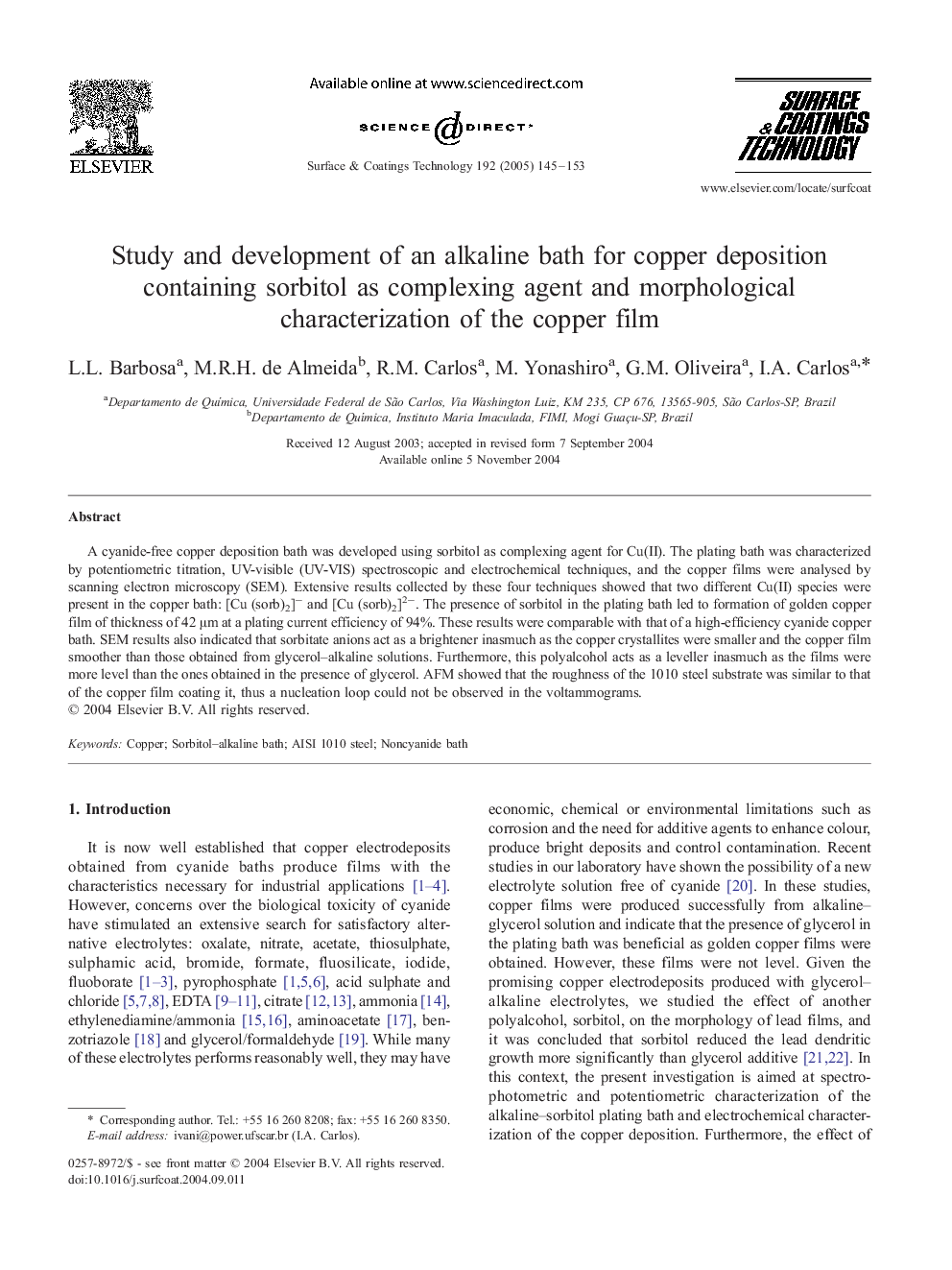| Article ID | Journal | Published Year | Pages | File Type |
|---|---|---|---|---|
| 9809871 | Surface and Coatings Technology | 2005 | 9 Pages |
Abstract
A cyanide-free copper deposition bath was developed using sorbitol as complexing agent for Cu(II). The plating bath was characterized by potentiometric titration, UV-visible (UV-VIS) spectroscopic and electrochemical techniques, and the copper films were analysed by scanning electron microscopy (SEM). Extensive results collected by these four techniques showed that two different Cu(II) species were present in the copper bath: [Cu (sorb)2]â and [Cu (sorb)2]2â. The presence of sorbitol in the plating bath led to formation of golden copper film of thickness of 42 μm at a plating current efficiency of 94%. These results were comparable with that of a high-efficiency cyanide copper bath. SEM results also indicated that sorbitate anions act as a brightener inasmuch as the copper crystallites were smaller and the copper film smoother than those obtained from glycerol-alkaline solutions. Furthermore, this polyalcohol acts as a leveller inasmuch as the films were more level than the ones obtained in the presence of glycerol. AFM showed that the roughness of the 1010 steel substrate was similar to that of the copper film coating it, thus a nucleation loop could not be observed in the voltammograms.
Keywords
Related Topics
Physical Sciences and Engineering
Materials Science
Nanotechnology
Authors
L.L. Barbosa, M.R.H. de Almeida, R.M. Carlos, M. Yonashiro, G.M. Oliveira, I.A. Carlos,
